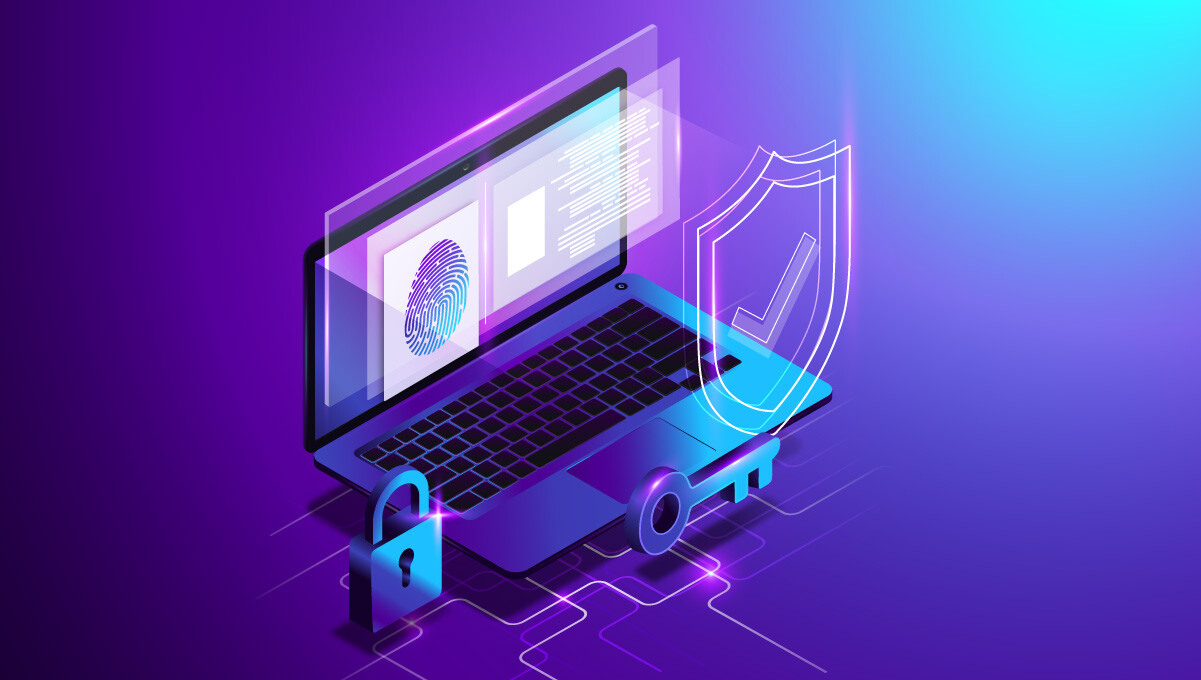
HR data is a valuable target for hackers. Depending on your employee count, it can be worth a fortune on the Dark Web. While a Social Security number is worth only two dollars on the market, a driver's license number fetches $100, and fresh emails are always a boon to data hackers.
With more information about individuals coming online daily, it's never been more critical for HR to protect employee information wherever you use it. Artificial intelligence can help protect your data in many ways but can also exponentially increase your data risks. Let's look at the upside first.
How AI helps you protect your data
Fraud Detection
Machine learning enables AI to conduct real-time fraud monitoring using an analysis of past behavior. It also adjusts its rules to block new threats, analyzes risk indicators in huge data pools, and monitors transactions in real time. When it sees a new threat, it adds it to its list.
Artificial Intelligence (AI) offers a much deeper solution, with anonymized anomaly detection. You can define rule sets to secure sensitive data against potential threats.
AI is much better and faster than humans in detecting unusual transactions. I recall an incident long ago where two hourly employees received over $2.6 million in direct deposits. One of them reported the error. The other tried to disappear. Although most employers now have automated processes to catch those errors, AI can now spot and stop those transactions and many others before you transmit them.
You will also set parameters for suspicious login attempts, and AI will immediately sound the alarm before the damage is done.
Over time, your AI will learn from your data to become smarter and faster.
Cyberattack Prevention
In addition to anomaly detection, AI can predict potential threats by analyzing massive datasets. Microsoft's Cyber Signals "analyzes 24 trillion security signals, 40 nation-state groups, and 140 hacker groups." The response is automatic, so alerts help you mitigate damage.
AI identifies vulnerabilities humans will miss when the deviations are too small to notice. By memorizing behavior within a network, it can see when actions don't fit the pattern and shut the session down.
The big bonus is that it will do all these things more efficiently and effectively than humans. However, these benefits come at a cost. Let's explore the risks and what to do about them.
The downside of AI security
Your AI processes vast amounts of personal and critical business data. It is a favorite target of hackers and Dark Web data sellers. AI benefits cybercriminals, and they put a lot of effort into using it to gain advantages. Both cybercriminals and hostile nation-states have AI-powered penetration sequences.
But that's only the beginning of AI risks. Here's what we have uncovered so far:
- AI's data analysis gives nefarious entities faster insight into your vulnerabilities. Their breach attacks grow more accurate, making traditional cybersecurity defense obsolete.
- Security is now a battle of AI vs. AI with no end in sight. AI security has become an ever-escalating issue. New defenses "may only give you only a short-term advantage.
- Hackers can poison the datasets you use to train it. It can cause your AI to alert to false positives or ignore intrusions, including biometrics.
- They can access your AI model, study it, design loopholes, or use your platform to attack others.
- Legacy anti-phishing training won't do the job today. Your team needs to update its skills now.
Where do we go from here?
Your security team can help guide your organization through the steps to mitigate AI and cybersecurity risks,
- If you haven't done so, institute organization-wide data governance. Your AI tools use your data to learn. What seems like an innocuous error can have a significant impact.
- Build on data governance to institute AI governance. For guidance in the US, you can refer to the National Institute of Standards and Technology's AI project.
- Create an AI risk-return center of excellence. It must understand the taxonomy of business services and processes where you use AI and automation, and where opportunities are to gain efficiency and performance.
- Conduct a cybersecurity risk assessment to determine what assets need protection, current security controls, and the priorities for remediation efforts. Develop a security scorecard for your firm and others in your ecosystem.
- Set up network access controls to prevent unauthorized access.
- Install firewalls and antivirus software.
- Create a patch management schedule.
- Create and train on an incident response plan so everyone knows what to do to minimize the impact of an intrusion or breach.
- Limit the number of remote access vendors, products, and solutions in your environment.
- Train your people. Eighty-two percent of data breaches are at least partially caused by human error.
AI is a tradeoff between risks and rewards, costs and benefits, but the pluses can vastly outweigh the negatives. We are now at the beginning of the acceleration curve.
Building a solid foundation now will serve you well into the future.
Read and share your free eBook.
PhenomᵉCloud is a comprehensive technology solutions provider committed to empowering businesses to overcome challenges, enhance their workforce capabilities, and achieve superior outcomes.


Leave a Comment